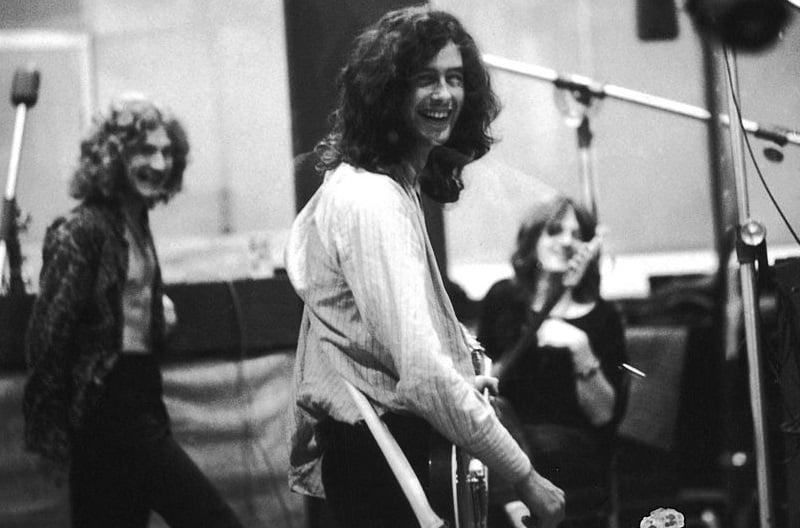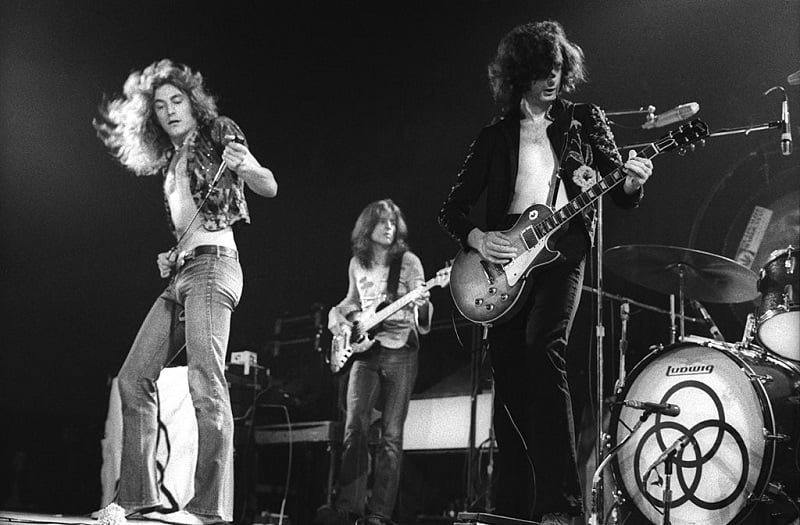How Led Zeppelin Pulled Out All the Stops on ‘Over the Hills and Far Away’
When you hear Jimmy Page talk about Led Zeppelin, you’ll hear him use the phrase “light and shade” to describe his vision for the powerhouse ’70s band. To Page, Zep was always so much more than the group’s hard rock and proto-metal output.
That’s why you heard acoustic and/or keyboard-heavy tracks on every Zep album except the bruising Presence (1976). But Page and his bandmates didn’t just try to mix in soft tracks between heavy ones. In many cases, Led Zeppelin did it in the space of a single song.
On the early albums, you hear that approach to dynamics on tracks such as “Ramble On” and “Babe, I’m Gonna Leave You.” And, a few years later, fans got an ever purer expression of Page’s “light and shade” in “Stairway to Heaven.”
But Led Zeppelin had much more to come after the release of its blockbuster Led Zeppelin IV (1971). On Houses of the Holy (1973), Page and the band returned with “Over the Hills and Far Away,” another track that showcased the band at its multifaceted best.
‘Over the Hills and Far Away’ ranks high in the Page-Plant songbook

When critics attacked Led Zeppelin III, many claimed Zep was trying to be something it wasn’t with the large dose of “light” material. This puzzled Page because he’d been showcasing his acoustic guitar work since the band’s debut album.
On “Over the Hills and Far Away,” the Zep guitarist delivers a knockout opening passage on a six-string acoustic. When the section repeats, you hear Page join himself on the track with some gorgeous 12-string acoustic work.
From there, it’s time for Robert Plant to enter the picture, and Plant may have never topped the combination of lyric and vocal performance he put on record for this track. You can picture Page and Plant sitting in the country (Headley Grange, if you like) working through this masterpiece.
But we still haven’t even heard from John Paul Jones and John Bonham. When the switch gets flipped, Zep’s rhythm section brings a groove that sets the tone for the song’s heavy elements.
Led Zeppelin packs in a lot of ‘light and shade,’ plus a wild coda

While most Zep fans love the band’s acoustic side, there’s nothing like Page, Bonham, and Jones tearing through a song’s rocking sections. “Over the Hills and Far Away” doesn’t disappoint on this front. It begins after Plant’s last repeated “So much.”
Page supplies the growling electric guitar while backing himself with an acoustic. Meanwhile, Jones delivers an especially thick bass line behind Page as Bonham delivers his usual high-wire work. Then it’s time for Page’s solo.
The “Over the Hills and Far Away” solo might not count among Page’s top 10, but it’s magnificent work nonetheless. And when it ends, he and Jones run through a nasty prog-style riff that anticipates the later masterpiece “Achilles Last Stand.”
Following another verse, the band isn’t done. Page the producer take center-stage at that point, and the trippy final section pushes “Over the Hills and Far Away” into Zep’s upper echelon. It’s a track where the band really used all the weapons in its considerable arsenal.


